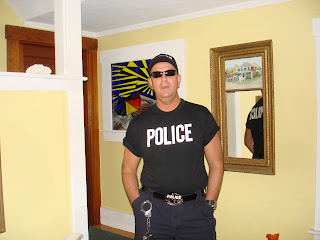
Breakfast is simple: rice, egg ( can be salted hard boiled egg or over easy), with piece of meat or fish. I don't think guests at the Ogunquit Beach Inn would like this type of breakfast. However, while in the Philippines I do enjoy this type of meal.
Rice is a staple for Filipinos as it is in most Asians countries. Forty percent of the Filipino diet in calories is rice. Rice is consumed at every meal.
Merienda. Merienda is an afternoon meal, usually after school or after a nap. Here I decided to indulge and have "Maruya". Maruya is a type of banana fritter. Local plantains ( sabas) are cut length wise and and dipped in a batter then fried. The flour and the banana forms a fritter the size of a human hand. Rolled in sugar and served hot-Ma Sarap (delicious). I went to my favorite street vendor everyday to enjoy these tasty treats!


Another treat is ice cream. Filipinos eat a lot of ice cream. Ice cream vendors sell this on the street in pushcarts. The Filipinos call this "dirty ice cream", because its sold out on the dirt ( hence the road...). Served on a bun, flavors can be avocado, cheese or mango. This is a true ice cream sandwich! Something I consumed almost everyday!

Everywhere you go in the Philippines there are street vendors selling food. The variety is amazing. Filipinos eat on the go, often eating little meals. For meals on the run, Filipinos will eat at turo-turo stands. Turo-turo literally means pick-pick, and you would pick your sides that would accompany rice. These meals are relatively cheap.

Typically, supper for Filipinos is rice, with either chicken, pork or seafood. One popular dish is chicken adobo. This dish is cubed chicken marinated with peppercorns, vinegar and soy sauce. Fish is either fresh or dried. In the Philippines nothing is wasted. You eat virtually the whole fish. Roasted chicken, roasted pork are also popular for dinner. One of my favorite side dishes is a sour soup called sinigang. This soup is made with tamarind and may have, shrimp, pork or chicken with vegetables.










































